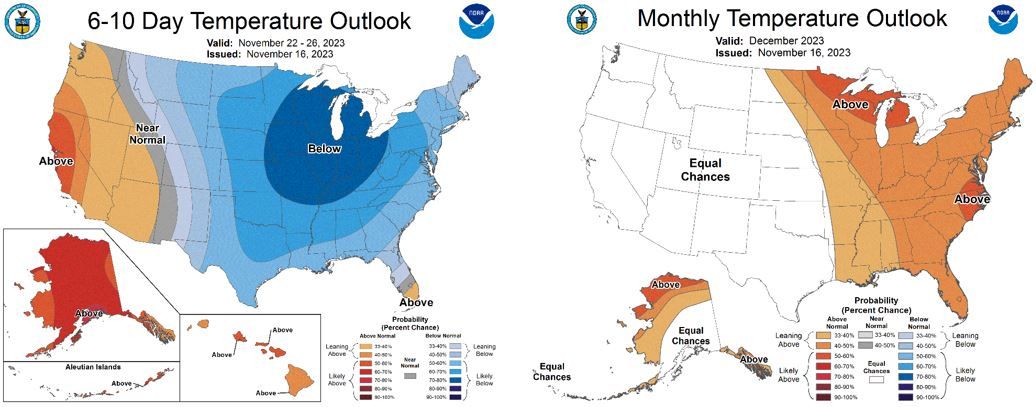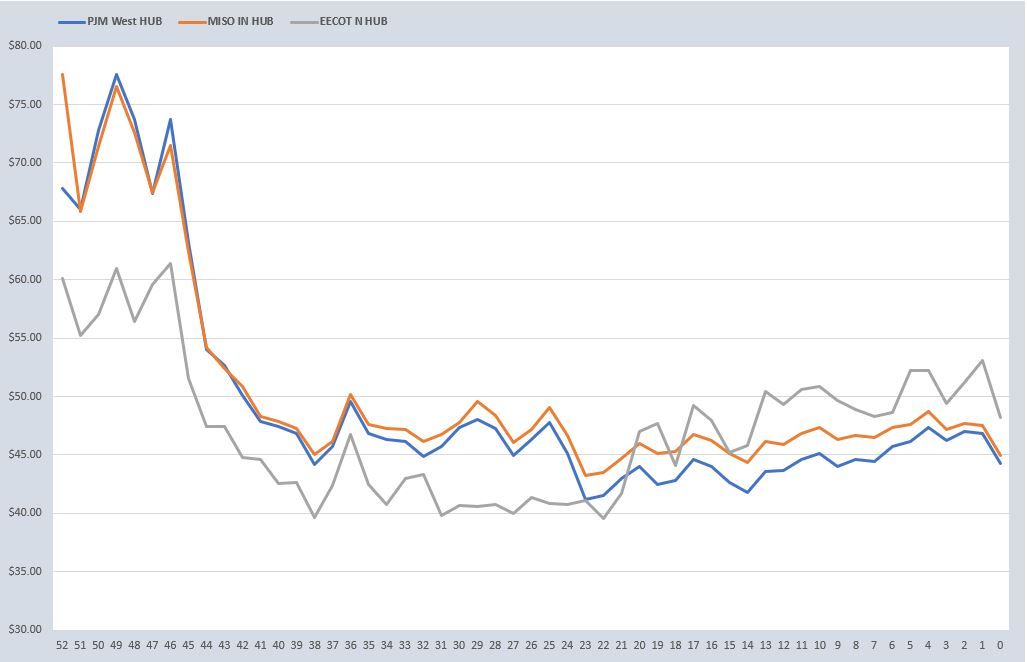Weekly Power Outlet US - Week 46
Exploring NERC's Winter Reliability Assessment, a natural gas market update, the return of El Nino, and insights into global LNG capacity. Dive into the latest energy trends and challenges, from storage concerns to shipping obstacles via the Panama Canal.

NERC Winter Assessment, Nat Gas, El Nino, LNG
Energy Market Update Week 46, brought to you by Acumen.
For More Updates Like This, Subscribe Here!Last week NERC released their reliability assessment for winter 23-24. As you might remember, for a time it felt like a common exercise in the WPO to comment on someone's reliability assessment as it seemed we got dire news weekly. We thought it might be interesting to go back and see if there are any changes from last year. The figures below show the year over year assessments with NERC deciding to add PJM and SERC to the list of possible trouble spots this year. For the most part, this year's report looks a lot like last year with fuel supplies, pipeline capacity in the NE, and intermittent generation as a concern. Added this year are a lot of comments on potential increase in load demand. Without saying it outright, it seems NERC has added the risk of ISO/RTOs to predict load which seems reasonable given what happened last year during Winter Storm Elliot.



An attempted natural gas rally was put to a stop yesterday as the EIA storage data showed an injection of 60 Bcf into storage easily surpassing expectations of 32 Bcf. Because of system updates at the EIA last week, this was the first opportunity for the market to see where storage was as we head into late fall. Current storage levels are roughly 5.5% of both the YoY and 5-year average. There are different estimates on capacity, but the consensus is we are almost at 90% of capacity. On top of storage numbers running ahead of historical averages, production continues to impress at just north of 104 Bcf/d so far in November.

Type El Nino into your favorite search engine and you will see lots of stories that have popped up this week. NOAA declared the start to El Nino, our first in five years, back in October. For whatever reason, this week it seemed to hit the mainstream media as reports ranged from ski season, holiday travel and rain in Miami as current and expected impacts. Whatever the reason, this El Nino has even been mentioned as a 'Super' El Nino which means surface temps in the Pacific are 2 degrees C warmer than normal. Interestingly enough, depending on where you live geographically, this is either good news or it's time to sound the alarms. At this point, the early NOAA forecasts have it looking more like winter in the south precipitation above normal, and less so in the north with temperatures looking above normal.

Every month, EIA puts out about a dozen or so reports under the title "Today In Energy". This week, two of the reports were dedicated to natural gas, specifically world storage and LNG. In the report dated November 14, EIA provides the normal caveats of what could go wrong, but states that "Relatively full natural gas inventories in the United States and Europe and expanded global liquefied natural gas (LNG) export and import capacity have improved the likelihood that global gas supply is sufficient to meet demand in the 2023–24 winter season (November–March)". As stated earlier, the storage in the US is ahead of averages and that is also the case in Europe, so they aren't breaking news. The interesting part of the statement is LNG capacity which they address in the November 13 Today In Energy. Again, this isn't a new topic, but the associated maps and chart show North American sites and capacity that is expected to double by 2027.
Speaking of LNG. If this were last year, the Panama Canal water level might be a much bigger story for the energy world. Because of insufficient water levels in the new portion of the Canal, some large tankers are having to bypass and sail south around Cape Horn causing increased shipping costs and timing delays.
The Weekly Power Outlet will be abbreviated next week for Thanksgiving. Happy Thanksgiving.

NOAA WEATHER FORECAST

DAY-AHEAD LMP PRICING & SELECT FUTURES


RTO AROUND THE CLOCK CALENDAR STRIP

DAILY RTO LOAD PROFILES

COMMODITIES PRICING

Not getting these updates delivered weekly into your inbox? Let's fix that, click the link below:






